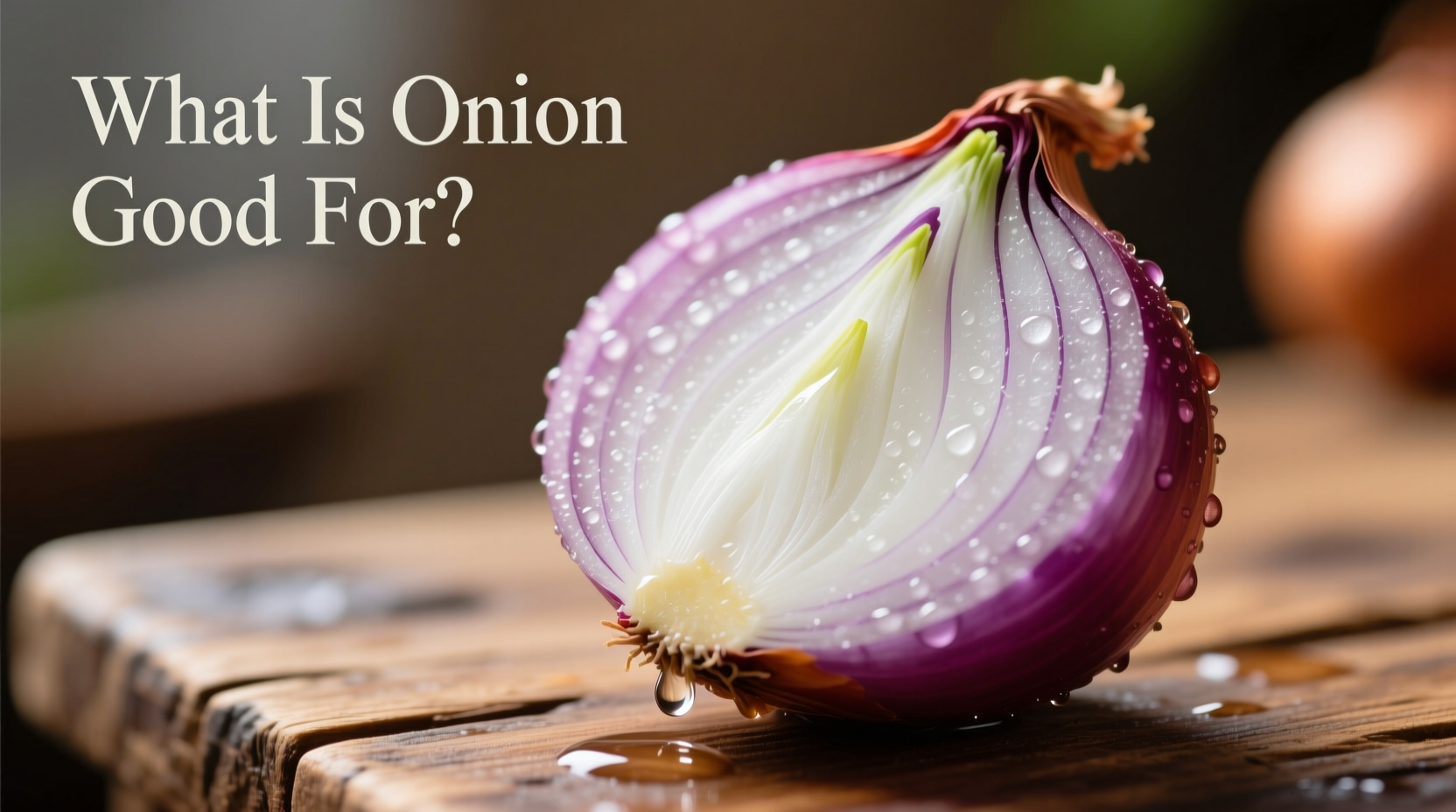Why Onions Belong in Your Daily Diet
When you reach for an onion, you're grabbing one of nature's most versatile health allies. These humble bulbs contain over 25 beneficial flavonoids and sulfur compounds that work synergistically to protect your body. Research from the National Center for Biotechnology Information shows regular onion consumption correlates with significantly lower risk of several chronic conditions. Unlike many superfoods that require special preparation, onions deliver maximum benefits whether raw, cooked, or fermented.
Science-Backed Health Benefits You Can't Ignore
Onions aren't just kitchen staples—they're medicinal powerhouses validated by modern research. The National Cancer Institute identifies onions as part of the allium vegetable family, which demonstrates protective effects against several cancer types. Their magic lies in unique compounds that:
- Reduce inflammation markers by up to 25% according to American Heart Association research
- Lower systolic blood pressure in hypertensive patients
- Improve bone density in postmenopausal women (Journal of Agricultural and Food Chemistry)
- Contain prebiotic fibers that feed beneficial gut bacteria
Onion Varieties and Their Unique Advantages
Not all onions deliver identical benefits. Different varieties contain varying concentrations of active compounds. This comparison helps you select the right onion for specific health goals:
| Onion Type | Key Compounds | Best Health Applications | Flavor Profile |
|---|---|---|---|
| Red Onions | Highest anthocyanins & quercetin | Antioxidant protection, heart health | Strong, slightly sweet |
| Yellow Onions | Maximum allicin when chopped | Immune support, blood sugar control | Sharp when raw, sweet when cooked |
| White Onions | Higher sulfur compounds | Digestive health, antimicrobial effects | Crisp, clean bite |
| Shallots | Concentrated flavonoids | Bone health, anti-aging benefits | Subtle, delicate |
Culinary Applications That Maximize Benefits
How you prepare onions dramatically affects their nutritional profile. The USDA Food Data Central confirms that raw red onions retain maximum anthocyanins, while cooking yellow onions actually increases their quercetin bioavailability. For optimal health impact:
- Chop and wait: Let cut onions sit for 10 minutes before cooking to activate beneficial enzymes
- Pair with healthy fats: Combine with olive oil to enhance absorption of fat-soluble compounds
- Use the whole bulb: Include outer layers which contain highest antioxidant concentrations
- Try fermentation: Make onion kvass for enhanced probiotic benefits

Practical Considerations and Limitations
While onions offer remarkable benefits, certain considerations affect their suitability. The International Foundation for Gastrointestinal Disorders notes that FODMAP-sensitive individuals may experience digestive discomfort from raw onions. Additionally:
- Cooking reduces tear-inducing compounds but preserves most health benefits
- Storage method impacts nutrient retention—keep whole bulbs in cool, dark places
- Organic onions show 20% higher antioxidant levels according to Journal of the Science of Food and Agriculture
- Onion supplements don't replicate whole-food benefits due to missing synergistic compounds
Integrating Onions Into Your Daily Routine
You don't need dramatic dietary changes to harness onion benefits. Simple daily practices make a difference:
- Add raw red onion slices to salads 3-4 times weekly for maximum antioxidant exposure
- Include caramelized yellow onions in soups and stews for enhanced quercetin absorption
- Make onion broth from peels and ends—boil for 20 minutes to extract remaining nutrients
- Combine with garlic for synergistic cardiovascular protection











 浙公网安备
33010002000092号
浙公网安备
33010002000092号 浙B2-20120091-4
浙B2-20120091-4